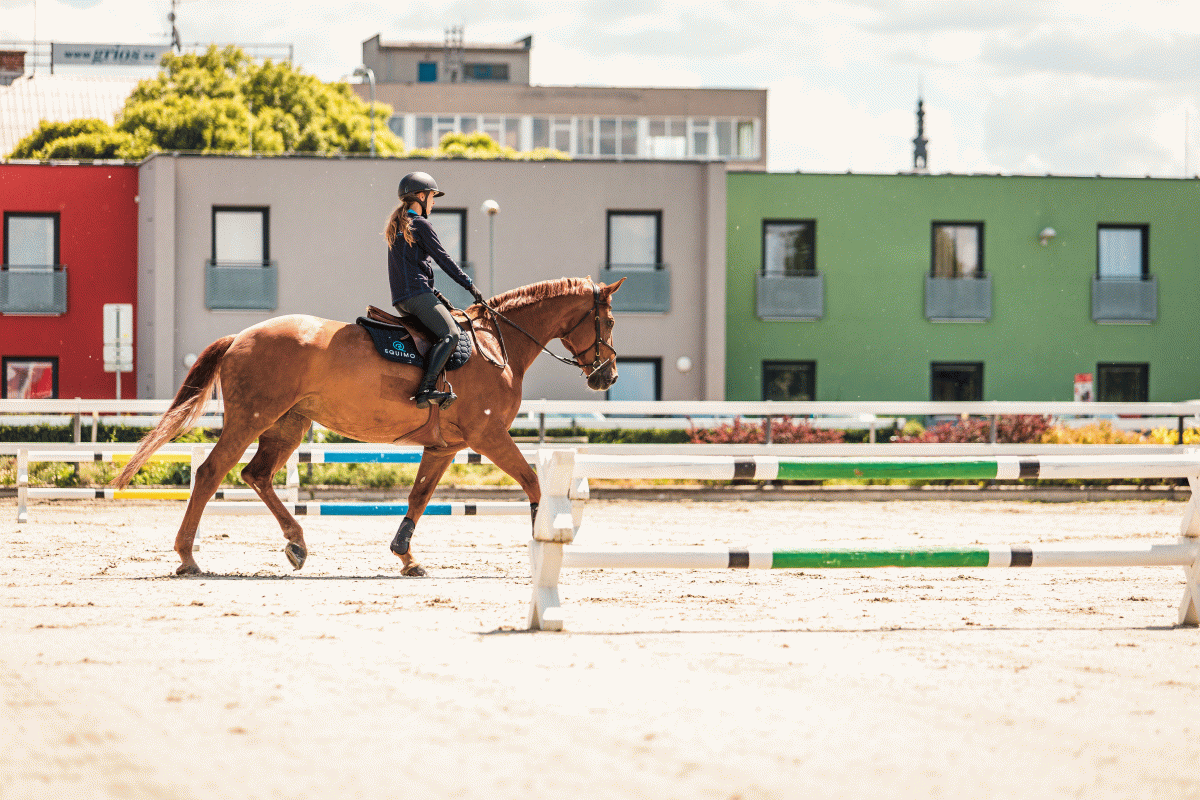
Článek v češtině si můžete přečíst ZDE.
The walk may be just the most underrated gait. It is often used just for rest between trot or canter work, sometimes not being ridden enough. Meanwhile, improving your horse’s walk can be of tremendous help to their training in general. By improving the walk, you’re also improving your four-legged partner’s mobility. Potential issues with contact or rhythm are hard to hide in the walk and can also be fixed by starting with work on this gait. It is simply the initial brick in your construction of a healthy and well-performing horse, so it should not be left on a side track.
Here are three reasons why implementing a walk pole exercise might be a good idea.
1. Balance and control
Pole work, in general, helps horses and riders find their balance and gain a bit of extra control. It makes riders focus on moving straight, and it helps correct potential unwanted bending of your horse’s body. In the walk, there’s time for everything – correct aids, approach, focusing on riding in the center of the poles, proper reactions from your horse, etc. Simply put – if there’s a problem with poles in the walk, this issue will only multiply in trot or canter.
2. Rhythm
Walk with its four-beat rhythm is the hardest gait when it comes to correct execution. Many horses struggle the most to carry themselves well in the walk, and poles may help here. Put in the right distance, poles will encourage your horse to engage hind quarters, express their walk and use more energy.
The rhythm of the walk should be a clear 4-beat one. This may be more important for dressage riders, where horses get marks for the steady 4-beat rhythm, but even showjumpers should pay attention to develop correct gaits. Poles help with any irregularities in this defined rhythm (horses sometimes put their front legs immediately after their hind leg, which results in an almost 2-beat rhythm), and implementing walk poles into your training plan helps to develop a clear and precise rhythm that will score you high marks in a test.
3. Stretching
We should always ride our horses in a way that’s therapeutic for them, not the other way around. Putting walk poles at a slightly longer distance makes your horse extend the gait and engage their backs, offering a great way of stretching.